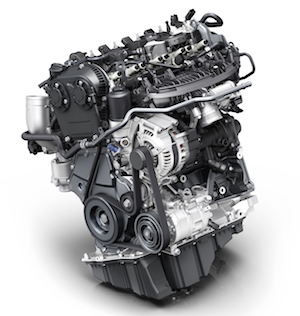Audi has officially debuted its new highly efficient 2.0-liter TFSI engine during the Vienna Motor Symposium in Austria. The new 190 horsepower turbocharged mill, which is the most efficient 2.0-liter gasoline engine in its class, will first be used in the next-generation A4 sedan before being distributed throughout the Audi portfolio.
The major advancement in Audi’s new 2.0-liter TFSI engine is its new combustion method. The automaker says its basic principle is comparable to the Miller cycle, which leaves the intake valve open longer during the compression stroke, pushing the fuel-air mixture out and back into the intake manifold. Audi engineers have improved on this method by shortening the intake time with a lesser crank angle and closing the intake valve earlier. Audi’s Valvelift System (AVS) on the inlet side also allows a short intake time at partial load and a longer time at higher loads, providing the optimal balance of power and efficiency.
Head of Engine Development at Audi, Dr. Stefan Knirsch, said the new engine “enjoys the consumption benefits of a downsizing engine in partial load operation, while at higher loads it has the advantages of a large-displacement engine. The result is optimal efficiency and performance characteristics across the entire engine speed range.”
The four-cylidner engine delivers 190 horsepower, but more notably, will pump out 236 lb-ft of torque in a wide speed range of 1,450 to 4,400 RPM. As a result, Audi says “every customer will benefit from the constantly accessible, high pulling” power of the engine, which can also deliver up to 47 US MPG.
In addition to its new combustion process, Audi’s new 2.0-liter engine also boasts several other new efficiency technologies. Coolant flow is carefully controlled and the exhaust manifold is integrated into the cylinder head, both improvements which shorten engine warm up times. The engine’s relatively low weight of 308.6 lbs and the use of low-friction oil will also contribute to further fuel efficiency gains when it reaches production later this year.














No Comments yet